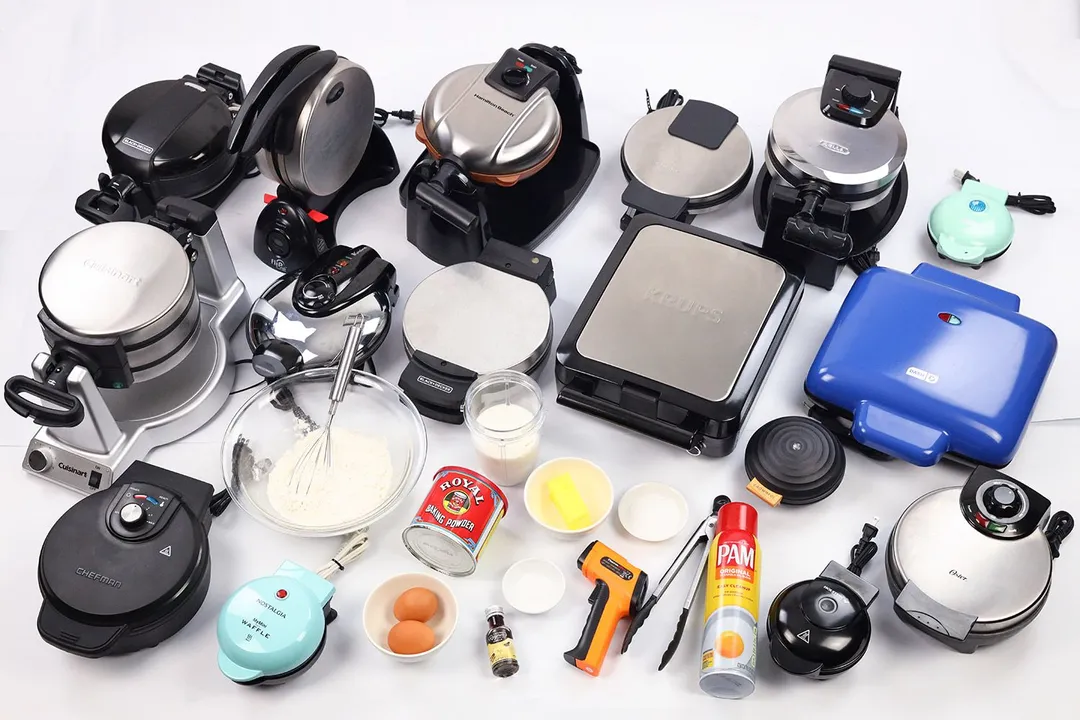Our recommendations are made independently through Research & Testing. We may receive commissions from purchases made via our links.
Birch Benders Mix for Waffle Makers
Convenient and quick, many people like to use pre-mixed waffle batter. As such, the test with Birch Benders boxed mix is important in our review.
This test is part of How We Test Our Waffle Makers v1.1
Many people don’t have the time or energy to mix their waffle batter from scratch. It is the reason why pre-mixed waffle batter is so popular. Just pour the raw flour from the box, add water, and a few minor ingredients like cooking oil, et voilà!
If you’re a fan of pre-mixed batter, the results in this test could be the critical deciding factor on which best waffle maker is a good fit for you.
Why the Test Matters
Its popularity is just part of why we decided to include boxed batters in our test.
Though they may look the same, a pre-mixed batter has vastly different characteristics than a self-mixed one. A waffle made from a pre-mixed batter will look and, more importantly, taste different from one made using a full recipe. For this reason, we have decided that there has to be a separate test for the pre-mixed batter.
Additionally, by comparing the performance score in this section with the scores of other recipes (self-mixed and cornmeal waffle recipes), we can better understand how versatile the particular waffle maker is. The higher and more uniform the scores in all three recipes are, the more capable it is at dealing with different recipes and batter styles.

Testing Recipe
We use the Birch Benders Organic Classic pancake and waffle mix for all of our waffle makers. Using the ratio at the back of the box, we mix our batter in the following proportions, which is enough for 3-4 servings of 7-inch waffles:
- 2 cups of waffle mix
- 1 1/3 cups of water
- 2 2/3 tablespoons of oil
Step 1: Pre-heat the waffle maker to 180°C — 200°C.
Step 2: Combine the waffle mixture with water and oil.
Step 3: Mix until all of the ingredients combine.
Step 4: Pour the batter into the waffle maker.
Testing Procedure
How Did We Find the Most Optimal Temperature and Time Settings for Our Waffle Makers?
The quality and characteristics of the batter alone don’t necessarily make a good waffle. For a high-quality waffle to be born, it has to be cooked at the correct temperature for the right amount of time. The objective of this calibration test is to find the exact temperature and timing marks for the waffle maker.
We conduct a calibration test with each new waffle maker that passes through our lab and every new recipe.
Because this is the second performance test in the pipeline (behind the self-made recipe test), at this point, we’ve already got an idea of what the optimal temperature and timing settings are. So, we recycle these numbers and see if the qualities of the produced waffles are consistent. We then make adjustments based on what we see (decreasing temperature, increasing cooking time, etc.)
Adjustments are continuously made until we find the best configuration for the waffle maker and the recipe.
Performance Test
The performance test is conducted as usual. After mixing up the batter, we pour it onto the waffle plate. When we close the lid, a timer is started. Using the calibration test, this timer is set to the optimal timing we obtained earlier.
When the timer beeps, the lid is lifted, and the waffle is transferred onto a plate. It is delivered immediately to our in-house chef for assessment and scoring.
Scoring Scale
The waffle is scored using three metrics: coloring (35%), texture (25%), and taste (40%).
We also base our performance test around cooking time. A good waffle with superb coloration, texture, and taste usually takes less than 10 minutes to finish cooking. Hence, if a waffle maker takes over 10 minutes to cook but also doesn’t manage to produce an edible waffle, then we will strike it as a failure. Scoring for all three metrics is going to be zero.
Coloring
The ideal waffle should have a beautiful golden brown color. It shouldn’t look too dark, which indicates charring. It also shouldn’t look too light, which could signify that it’s undercooked.
Besides having the right tone, it should also be uniform. There shouldn’t be any abnormally light or dark spots peppered throughout the waffle.
- Golden brown, uniform color distribution: >=9.5
- Light or dark gold, minimal discolored spots: 8 - 9.4
- Light or dark brown, multiple discolored spots: 7 - 7.9
- Very light gold or very dark brown, multiple discolored spots: 5 - 6.9
- Pale gold (undercooked) or black (charred): <=5
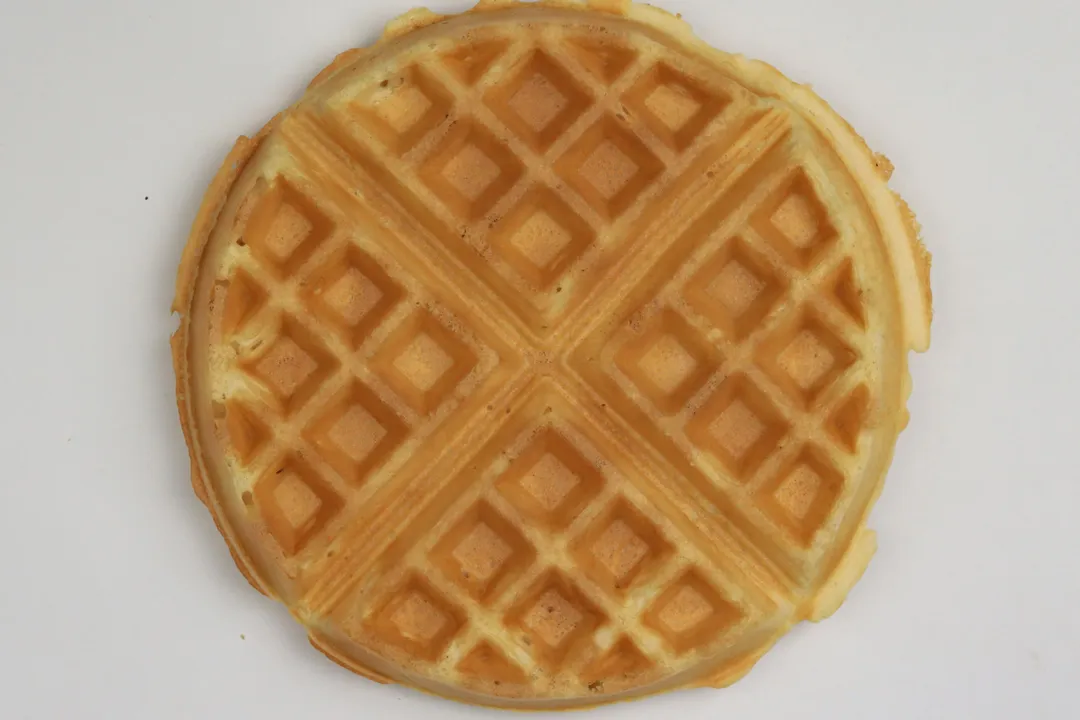

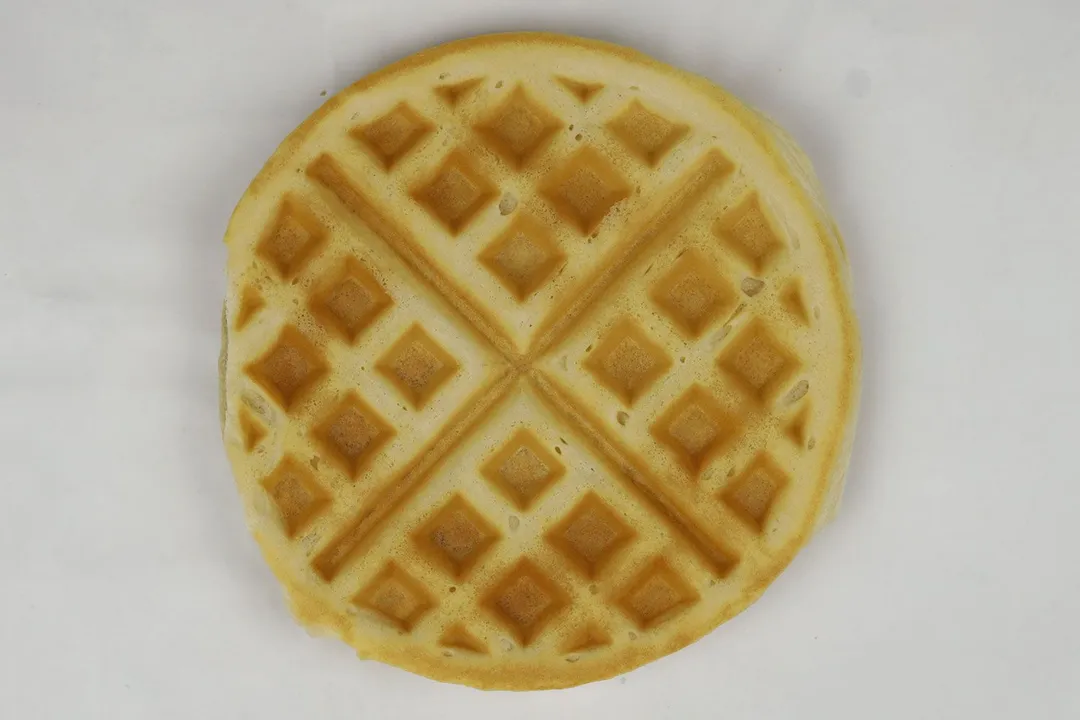
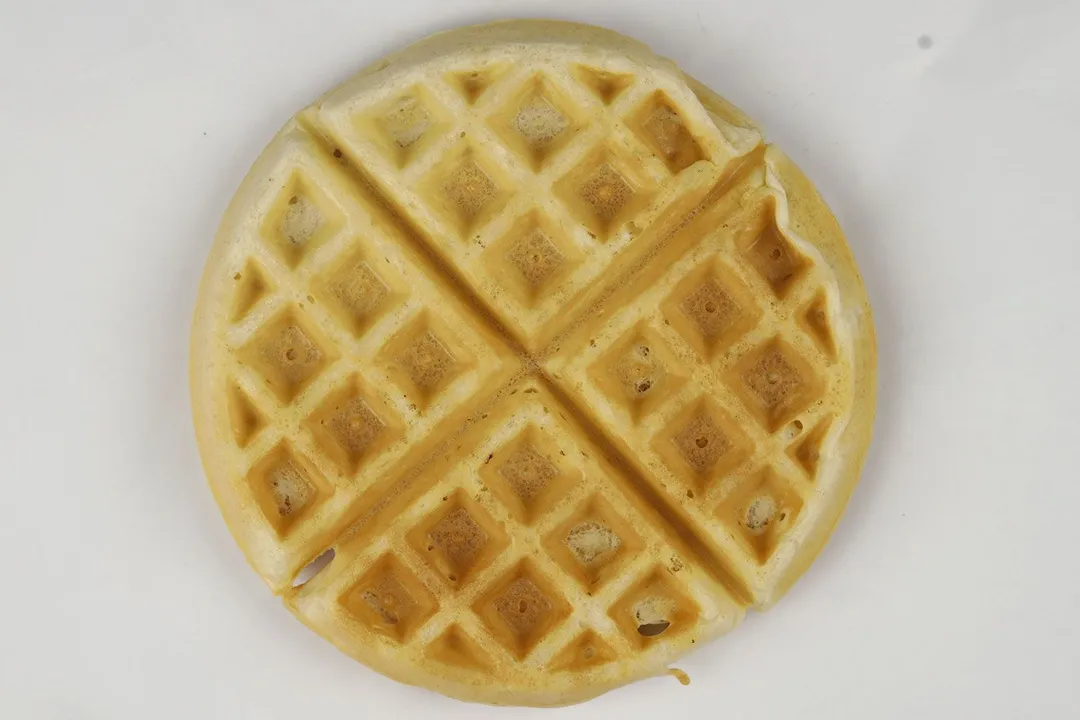

In cases where coloring differs between the two sides of the waffle, the total score is calculated by averaging the individual score of each side. The score is then subtracted per the five-point scale above. With each degree of difference, 0.25 is taken off from the total score.
For example:
In our performance test, the BLACK+DECKER WMD200B made a waffle with distinctly contrasting coloration. By averaging the scores of the two sides, we received a rough total score of 7 ([9+5]/2). Because the score bands of the top and bottom differ by three levels on our scale, a further 0.75 is subtracted.
We finally received a final total score afterward being 6.25.

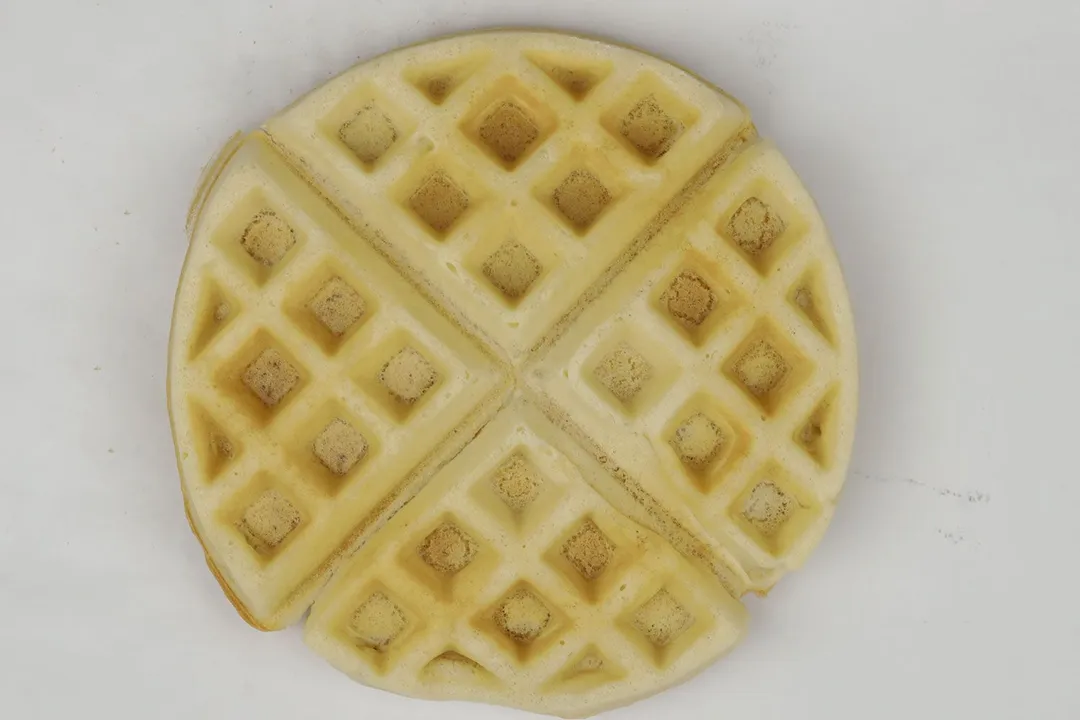
Texture
A good waffle should be fluffy and pliant enough to melt on the tongue.

However, it shouldn't be so soft that it breaks apart when picked up. It also shouldn't be so burnt that the crust immediately crumbles when it's touched. In both of these cases, that's an automatic fail.
Besides the texture, we also pay close attention to the number of air bubbles residing within the core of the waffle. The more bubbles there are, the softer the waffle will be. These bubbles form due to a process called aeration, which is a crucial stage in the development of the waffle as it consolidates from a liquid batter to a solid shape.
- Perfect (Multiple bubbles observed, perfect springiness, and interior is fully cooked): >=9.5
- Excellent (Displaying a decent number of air bubbles, decently springy, interior is fully cooked): 8 - 9.4
- Good (Good number of bubbles, springy but may not fully come back to original shape, interior is fully cooked): 7 - 7.9
- Mediocre (Small number of bubbles, springiness is minimal): 5 - 6.9
- Bad (Little to no bubbles observed, does not return to original shape at all after compression, inside is undercooked and runny): <=5
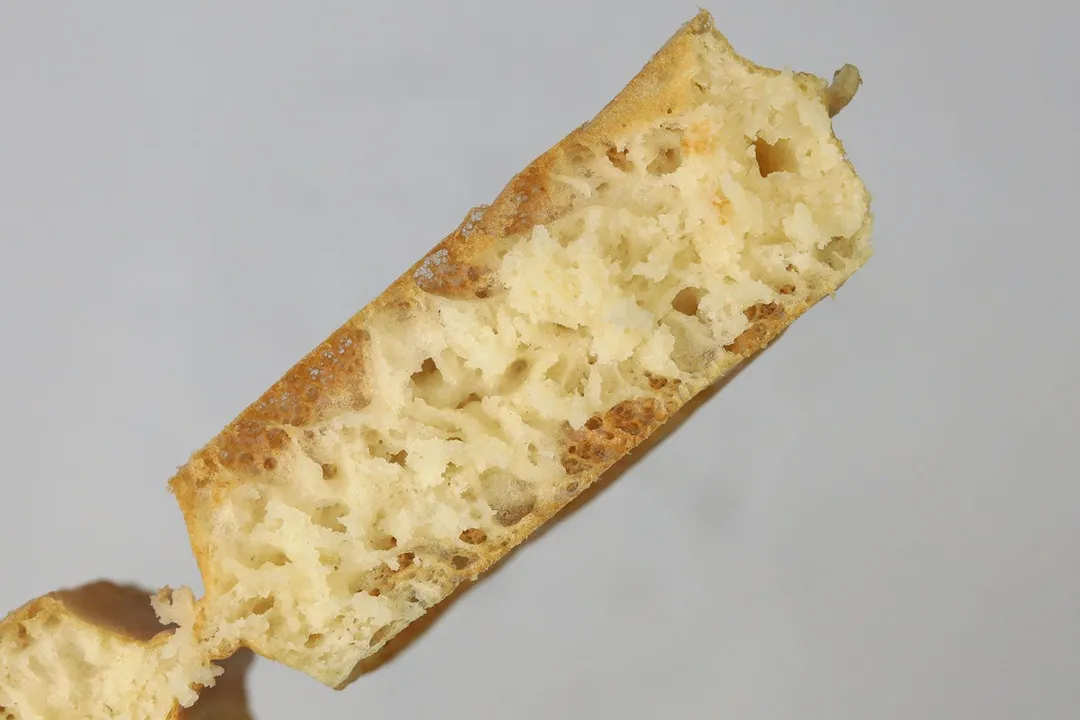
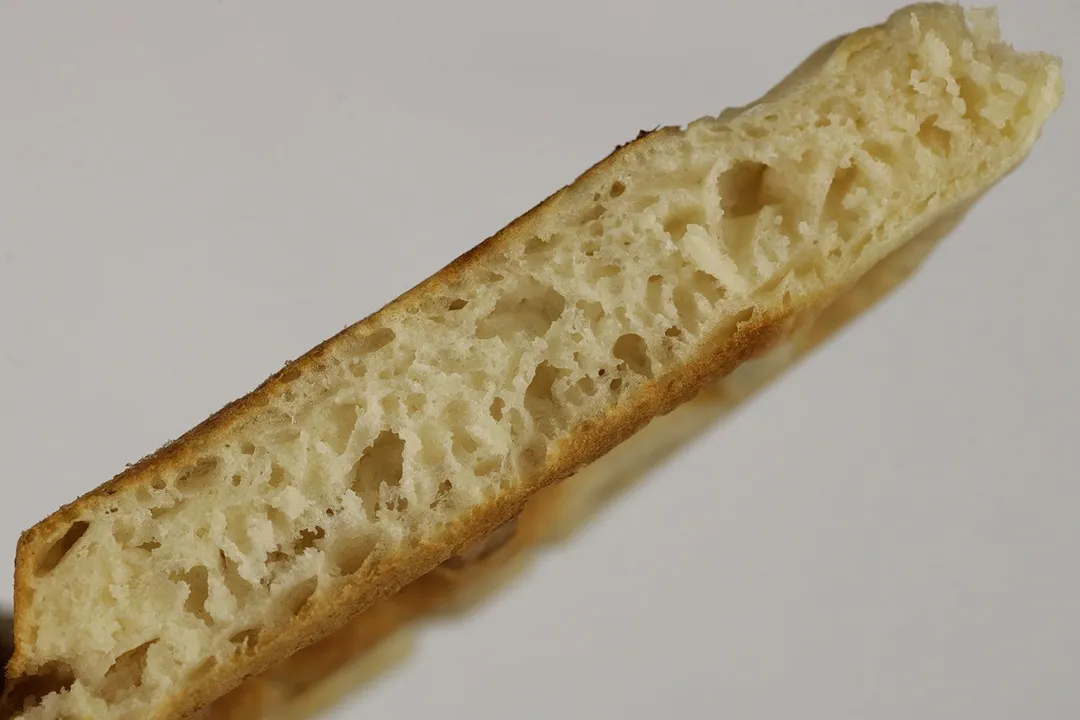

Taste
Taste is the most critical benchmark in our test. A waffle could look splendid and have the softest texture but will still be considered a failure if it doesn't taste good.
Unfortunately, grading a waffle's taste is tricky as everyone has a different palette. Some prefer sweet and light waffles. Others prefer saltier or more bitter and crispier waffles. So, the scoring in this section is subjective, depending on the palette of our in-house chef. Despite this, the taste score can still be a good reference point for judging the quality of the waffle maker.
After our test waffle batches have finished cooking, they are delivered to our kitchen, where they will be judged by our in-house chef: Tuyet Pham.
Test Developers
Matthew Lee is a writer and editor for HealthyKitchen101. With over 8 years working for various outlets and agencies, specializing in tech review and other subjects of note, such as current affairs.
Lap is Head of the Research, Testing, and Review Team (RTR Team) at HealthyKitchen101.com, where he directs and supervises the testing of kitchen gadgets and appliances.
Tuyet Pham is an award-winning Saigonese chef passionate about delicious and healthful foods. At HealthyKitchen101, she develops recipes and collaborates with our Research, Testing, and Review lab to evaluate the performance of cooking appliances. Her assessments add a strong authoritative voice to our product scoring process.
Nguyen Ntk is a graphic designer, photographer, and videographer whose philosophy centers around respecting and celebrating the beauty of reality. Through his lenses, Nguyen strives to capture the true essence of objects and events, showcasing and highlighting authentic features without distortion or exaggeration.




